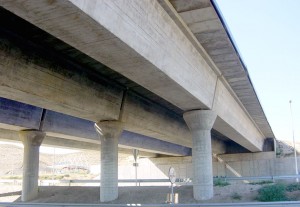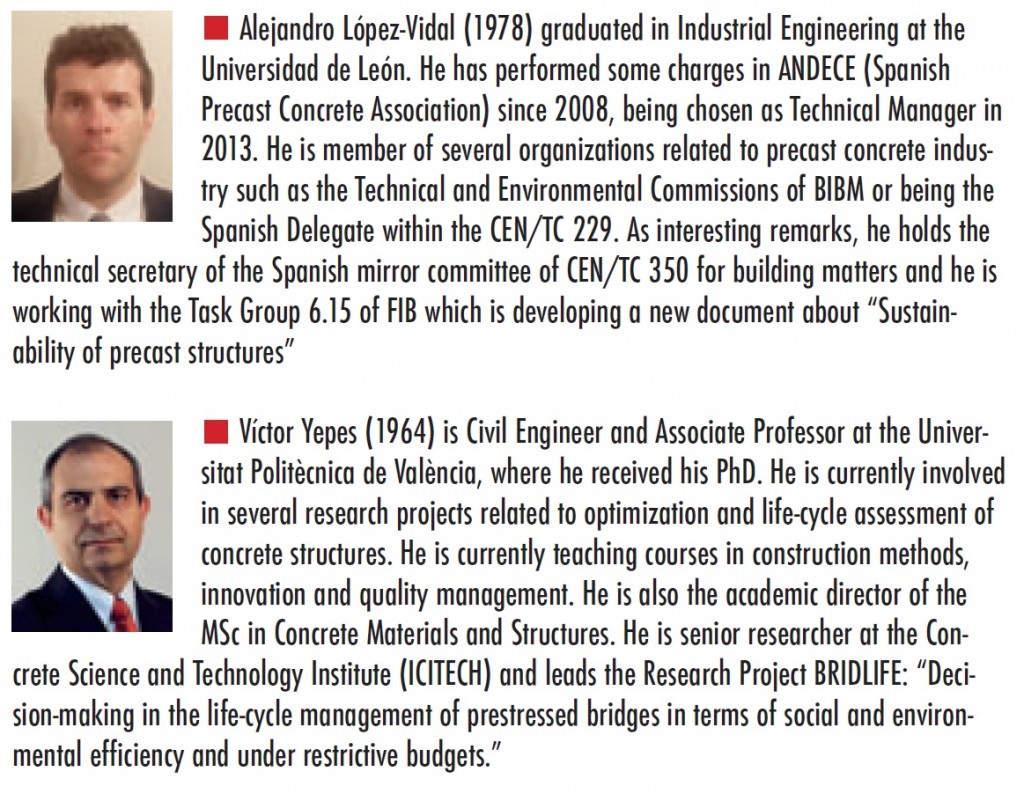
¿Cómo se pueden diseñar puentes pretensados prefabricados en vigas artesa haciendo que el consumo energético para su fabricación y puesta en obra sea el mínimo posible?
Highlights
- An automated procedure for optimizing the design of structures is presented.
- There is a parabolic relation between the span length and the minimum energy.
- The energy reduction has an average cost impact of 3.23€ per square meter of deck.
- Since both criteria are dependent, 1€ reduction is equivalent to 4 kW h saving.
Abstract
 An automated procedure for optimizing the design of precast-prestressed concrete U-beam road bridges is presented. The economic cost and the embodied energy are selected as the objective functions based on production materials, transport and placement. Heuristic optimization is used to search for the best geometry, the concrete type, the prestressing steel, and the reinforcement for the slab and the beam. The results for both objectives provide improved opportunities to learn about low-energy designs. The most influential variables for the energy efficiency goal are analyzed. The relationship between the span length and the embodied energy is described by a good parabolic fit for both optimization criteria. The findings indicate that the objectives do not exhibit conflicting behavior, and also that optimum energy designs are close to the optimum cost designs. The analysis also revealed that a reduction by 1 Euro can save up to 4 kWh. It is recommended to reduce the reinforcement in the slab as well as increase the volume of concrete in both slab and beams in order to achieve higher energy efficiency. It is also worth noting that web inclination angle should be increased when the depth increases for longer span lengths to maintain the optimum slab span lengths in the transverse direction.
An automated procedure for optimizing the design of precast-prestressed concrete U-beam road bridges is presented. The economic cost and the embodied energy are selected as the objective functions based on production materials, transport and placement. Heuristic optimization is used to search for the best geometry, the concrete type, the prestressing steel, and the reinforcement for the slab and the beam. The results for both objectives provide improved opportunities to learn about low-energy designs. The most influential variables for the energy efficiency goal are analyzed. The relationship between the span length and the embodied energy is described by a good parabolic fit for both optimization criteria. The findings indicate that the objectives do not exhibit conflicting behavior, and also that optimum energy designs are close to the optimum cost designs. The analysis also revealed that a reduction by 1 Euro can save up to 4 kWh. It is recommended to reduce the reinforcement in the slab as well as increase the volume of concrete in both slab and beams in order to achieve higher energy efficiency. It is also worth noting that web inclination angle should be increased when the depth increases for longer span lengths to maintain the optimum slab span lengths in the transverse direction.
Keywords
- Heuristic optimization;
- energy savings;
- sustainable construction;
- precast-prestressed concrete structures
Referencia:
MARTÍ, J.V.; GARCÍA-SEGURA, T.; YEPES, V. (2016). Structural design of precast-prestressed concrete U-beam road bridges based on embodied energy.Journal of Cleaner Production, 120:231-240. DOI: 10.1016/j.jclepro.2016.02.024(link)

